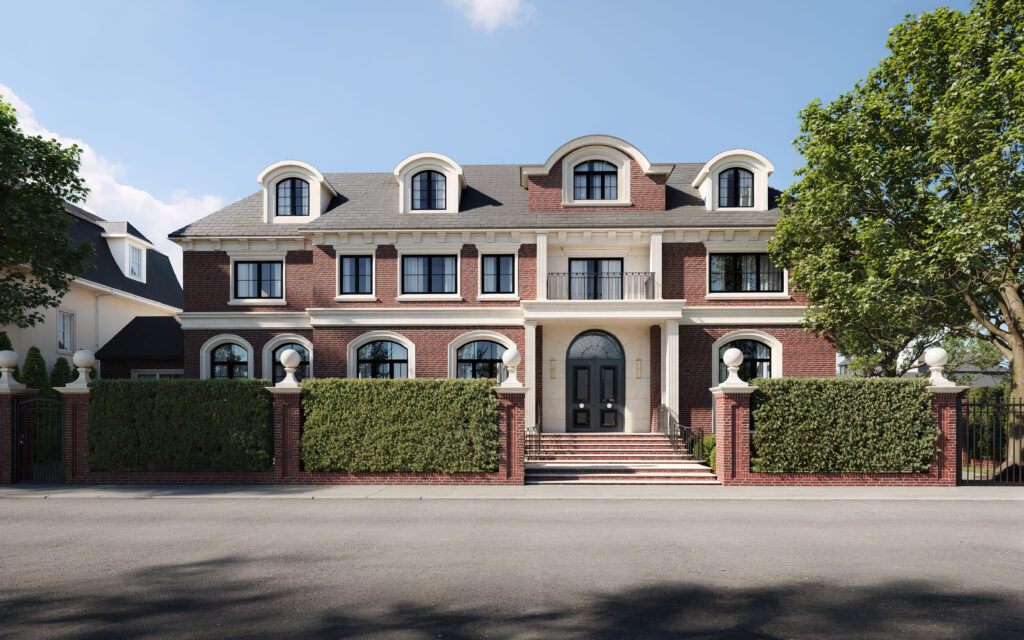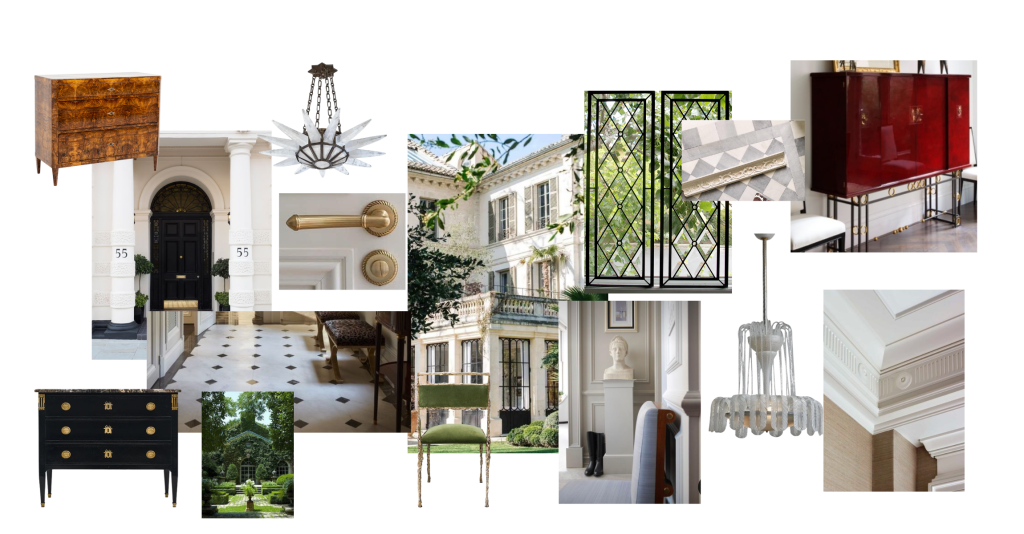As a design firm, we are often asked what inspires us most. And while we draw influence from many places, we find ourselves consistently — almost instinctively — returning to European architecture and design. There’s something about it that feels not just beautiful, but informed, elevated, and deeply human. It’s a way of thinking that places beauty, proportion, and craftsmanship not on a pedestal, but at the foundation of daily life. At the same time, so many of us here at the firm have spent so much time traveling through Europe.

A Culture That Honors Design as Meaning
In Europe, design is not a decorative afterthought — it’s really embedded into the very fabric of the culture. There’s this innate understanding that a well-crafted space shapes not your behavior, but spirit. Buildings are designed to age with dignity. Details are not ornamental, they are intentional. The spaces one walks through — be it a Roman basilica or a Florentine villa — serve as evidence of a civilization that took its time.
Whether we are referencing the poetic minimalism of John Pawson, the layered eclecticism of Axel Vervoordt, or the rigorous classicism of Vincenzo Scamozzi, we are always looking to traditions that elevate the soul through spatial clarity, material honesty, and emotional resonance.
Generations of Artisanship
Europe’s relationship with craftsmanship is perhaps its most defining quality. In towns from Paris to Porto, Venice to Vienna, one finds not just builders — but artisans, whose skills have been passed down for centuries. The stonecutter, the ironworker, the gilder, the upholsterer — their work carries the imprint of tradition, yet remains vital and alive.
This deep lineage of making is central to how we work. Whether we are sourcing French Limestone from France, commissioning a bespoke fixture from an atelier in Milan, or collaborating with master plasterers in New York trained in European methods, we honor craft as the bridge between concept and atmosphere.

Sophistication Through Restraint
The most compelling spaces in Europe — and in our own work — are often the most restrained. It is a concept that we are always discussing in the office. A stone archway in Palazzo Farnese, the spatial rhythm of Villa Rotonda, the asymmetrical elegance of Carlos Scarpa’s detailing at the Brion Tomb — these are studies in quiet power. In every case, form follows meaning.
This restraint doesn’t take away richness — it heightens it. It’s what allows one perfect gesture — a monolithic fireplace, a hand-rubbed lime wall, a single antique object — to take on monumental emotional weight.

Buildings That Uplift
Tucker Carlson, in a recent interview, remarked on the stark contrast between the spiritual resonance of Russian architecture and the sterile, capitalist backdrop of many American cities, it was so powerful and really got us thinking. He said:
“When you walk through Moscow, you see buildings that were meant to inspire. They reflect pride, soul, identity. Walk through any major American city, and you’re surrounded by soulless glass office towers — buildings that make no effort to move you.”
We find his observation compelling. It echoes something we feel deeply: that architecture can — and should — uplift. That spaces must do more than contain us; they must elevate us.
In contrast, the American-built landscape — shaped heavily by capitalism — often prioritizes cost, efficiency, and short-term ROI. The result? Spaces that are easily replicated, easily demolished, and easily forgotten. It is crazy when you think about it. That’s not to say that there aren’t iconic modernist structures that are awe-inspiring and forward-thinking, such as works by Zaha Hadid, Frank Gehry, and Paul Rudolph.
It’s Nourishment
European design understands something many modern cultures have lost: that beauty is not frivolous, it’s essential.
It nourishes the spirit. It slows us down. It reminds us of meaning.
When you live in a space designed with intention, it changes the way you move, the way you think, even the way you love.
That’s why we gravitate toward the European way — not because it’s more luxurious, but because it’s more human.
We aspire to that same mindset. We create homes not just for now, but for legacy.
It’s about creating something you can live with, grow with, and ultimately, feel at home in.

